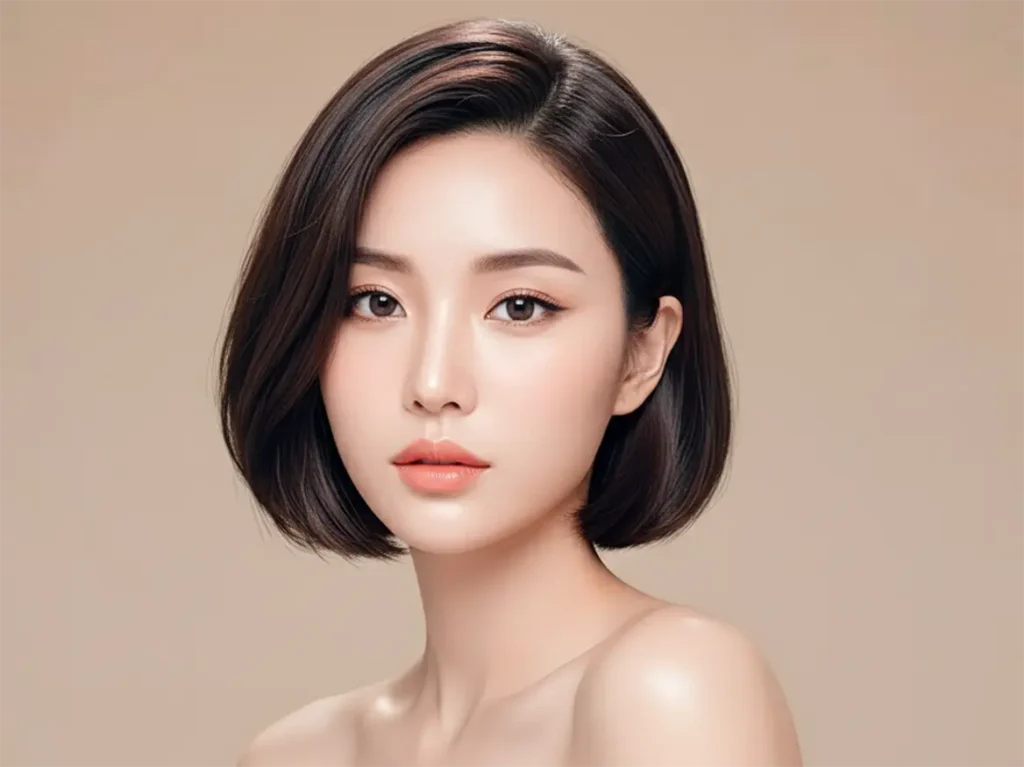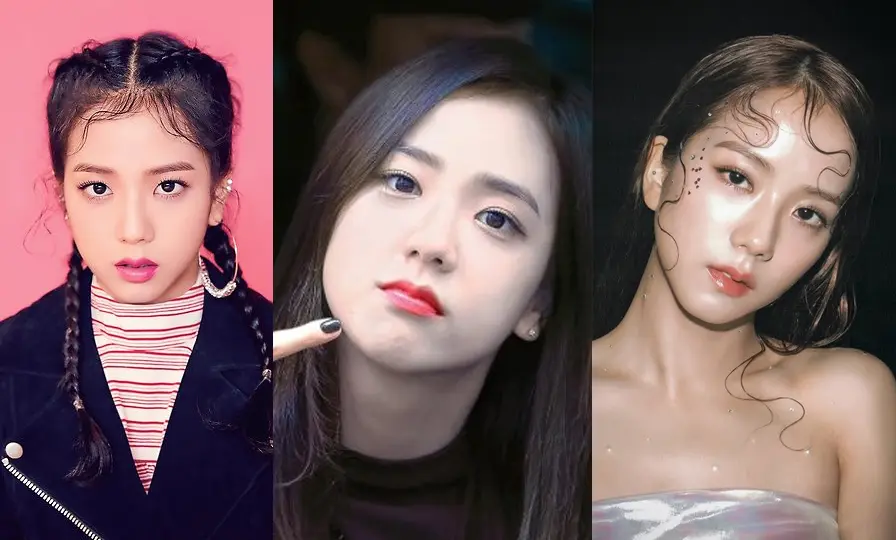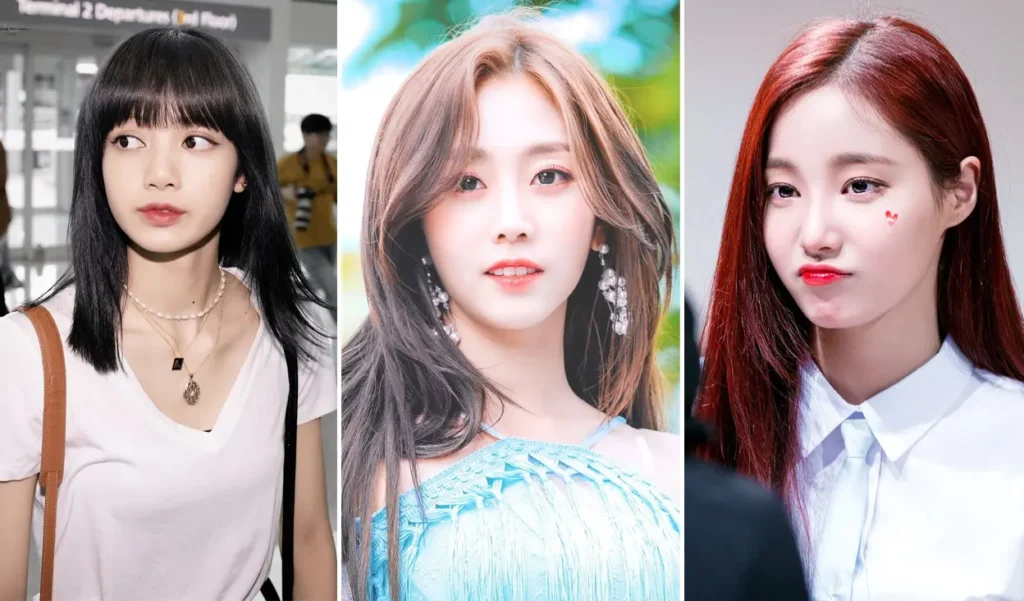In the Korean entertainment industry, female beauty standards in K-pop are not merely aesthetic requirements but also deeply reflect the nation’s cultural and historical values. From the Joseon dynasty to the modern K-pop era, these standards have evolved over time while retaining their distinctive characteristics.

Historical Origins of Korean Female Beauty Standards
The Three Kingdoms and Goryeo Period
The history of makeup and traditional beauty standards in Korea can be traced back to 57 BC during the Three Kingdoms period (Goguryeo, Baekje, and Silla), reaching its peak during the Goryeo dynasty (918–1392).
In the Silla kingdom, the philosophy of young-yook-il-chi-sa-sang emphasized harmony between physical beauty and inner virtue, rooted in the belief that a beautiful body would house a beautiful soul.
The Joseon Dynasty
During the Joseon dynasty (1392–1897), Confucian values profoundly shaped female beauty standards. Women were admired for their flawless fair skin, which symbolized purity and higher social standing. Joseon aesthetics valued simplicity and composure, reflected through the concept of sambaek (three whites), samheuk (three blacks), and samhong (three reds), highlighting pale skin, jet-black features, and subtle rosy accents.
Defining Features of Female K-pop Beauty Standards
V-Line Face
A sharp V-shaped jawline is considered the ultimate “visual weapon” for female K-pop idols. The ideal K-pop V-line is not too long, square, wide, or angular.

A slim V-shaped chin paired with a softly rounded face creates a refined yet youthful look. Artists like Jennie Kim (BLACKPINK) and Jisoo (BLACKPINK) are prime examples of this standard.
Glass Skin
“Glass skin” is the ultimate goal in K-beauty standards, defined by smooth, radiant, almost translucent skin that reflects light like glass.
The preference for pale skin has deep cultural roots, historically associated with nobility and a life free from manual labor. Idols such as Song Hye-kyo are renowned for their glowing skin, often described as timeless beauty.
High Nose Bridge
A well-defined, high nose bridge is another significant feature of Korean beauty standards in K-pop. It enhances facial harmony, making the face appear more elegant and refined.
While many idols are naturally blessed with this trait, cosmetic surgery and makeup techniques are often used to accentuate or create the illusion of a higher nose bridge. Idols such as Irene (Red Velvet) and Yoona (Girls’ Generation) are frequently admired for their nose shape, which has become a widely sought-after aesthetic.
Double Eyelids and Aegyo Sal
Large, expressive eyes with defined double eyelids are a hallmark of modern K-pop beauty ideals. In particular, aegyo sal—the small puffy area under the eyes—has become a unique K-beauty trend.

Aegyo sal, meaning “cute skin” or “puppy fat,” enhances a youthful and innocent appearance, beloved by both men and women. Celebrities such as Jisoo (BLACKPINK), Nayeon (TWICE), and Jungkook (BTS) exemplify this trend.
S-Line Body Shape
In K-pop, the female S-line body shape is seen as the ideal. The S-line describes a balanced, curvy figure similar to an hourglass, with a slim waist contrasted by fuller bust and hips. Other beauty criteria include an ideal height (around 160 cm or taller), a slender frame with a small waist, and harmonious body proportions.
Cherry-Shaped Lips
Small lips with a defined cupid’s bow and slightly curved lower lip create a charming look. The “규” lip shape, where the corners naturally curve upward, gives the impression of a subtle smile.
This trend hasn’t always been popular—thinner lips were once more admired. Today, Jisoo of BLACKPINK is considered to have the perfect lips, becoming a benchmark for female K-pop beauty standards.
The Impact of K-pop on Beauty Standards
K-pop has enriched global perceptions of beauty. Idols like Hwasa (MAMAMOO) have challenged traditional norms by embracing individuality and exuding confidence. Amber Liu of f(x) defied gender expectations with an androgynous style, proving that beauty transcends conventional standards.
However, these rigid standards also bring heavy pressure. Pursuing such ideals can lead to body image issues, extreme dieting, and plastic surgery. Female K-pop idols face some of the harshest versions of modern Korean beauty standards, from unhealthy weight loss practices to strict eye shape expectations.
Today, the boundaries of beauty standards have become more blurred. It is no longer simply “X fits the beauty standard, therefore X is beautiful” or “Y does not fit, therefore Y is unattractive.” Idols like V (BTS), Jennie (BLACKPINK), and Seulgi (Red Velvet) are widely admired for their beauty and charisma, even if they do not fully conform to traditional standards.